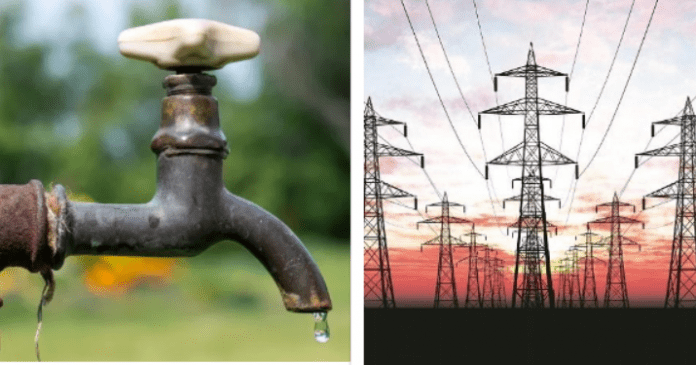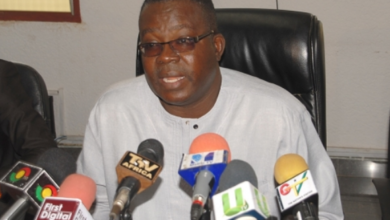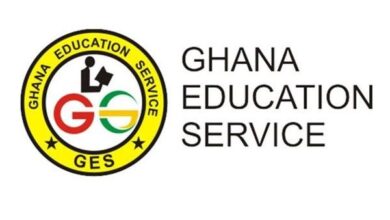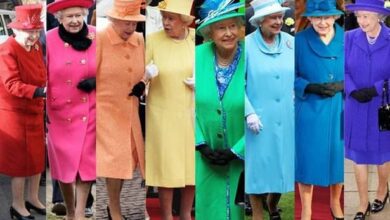PURC increases water and electricity tariff by 21% & 27.15%

The Public Utilities and Regulatory Commission (PURC) has increased water tariff by 21% and electricity tariff by 27.15%.
The PURC increases water and electricity tariff after an upward adjustment proposal made by the two utility bodies. The new tariffs are expected to take effect latest September 1, 2022.
This was announced by the regulator today Monday 15th August, 2022.
According to 3news.com, the management of the Electricity Company of Ghana (ECG) made a proposal to the PURC to increase electricity tariffs by up to 148 per cent covering 2019 to 2022.
Understandably, ECG also proposed an average increase of 7.6% in tariff over the next four years to cover Distribution Service Charges (DSC).
The ECG has this to say, “The result of ECG’s tariff proposal for the next five years shows an approximately 148% increase on the current DSC1 in 2022 and an average increase of 7.6% year on year from 2023 to 2026. “The high increase in the DSC1 for year 2022 could be attributed to the gap that has developed over the years between the actual cost recovery tariff and the PURC approved tariffs as well as the cost of completed projects”.
“Similarly, ECG’s proposed DSC2 shows a higher increase of 28.4% in first year (2022) while that of the subsequent years’ increases by an average of 2% from 2022 to 2026”, as added.
The management of ECG also indicated that its financial sustainability is important as it impacts on the entire energy sector.
“The financial sustainability of the Electricity Company of Ghana is important as it impacts on the entire energy sector. With the huge investment needs facing the distribution industry over the next five years, it is expected that the proposed tariff increases would inevitably be approved to sustain efficient and reliable electricity service.”
“Over the next five years, the DSC will need to increase consistently (average of 7.6%) to cover distribution cost. It is expected that the approved BGC would correspond with the commercial terms of PPAs (Power Plant Agreements)”, they added.
The woes of Ghanaians intensifies as the management of the Ghana Water Company (GWCL) also proposed to the PURC to increase water tariff.
In a statement by 3news, The GWCL in its proposal said over the years, the approved tariffs have not been full cost reflective. This, according to the GWCL has led to the inability of GWCL to raise enough revenue to finance the much needed capital investment projects, with a consequent unsatisfactory level of service, the company said.
“Among the urban poor, water can be a critical resource in short supply. GWCL has therefore set up a Low-Income Customer Support Department (LICSD) to deliver improved services to targeted low income urban poor areas.
Also Read: PURC: Utilities in Ghana Proposed Tariff Review for 2022-2027
“The Government of Ghana is committed to expanding access to safe water supply services in urban areas with particular focus on improving water production and expansion of distribution systems and ensuring sustainable financing of the sector. It is estimated that about $2billion will have to be invested in water production to help increase current urban coverage to 100% country-wide by 2025.
“Notwithstanding the challenges mentioned above, it is important to consider the broad sectoral focal areas that impact on water operations. These include sustainable water sources, access to potable water, sustainable financing, improved public private partnerships, capacity building, good governance, good research and development, monitoring and evaluation, water safety and customer interest/education.
“GWCL therefore has embarked on an image redeeming mission, for transformation into a ‘world class utility company’. We therefore call on our Regulator, the PURC, to provide every necessary support to enable us turn things around,” the proposal said.
It added “Like any utility, GWCL is expected among others to: Provide services that are safe, desirable, and affordable to consumers; and Ensure an institutional and commercial system capable of recovering costs.
“GWCL must at least recover its costs if we are to sustain our operations. Over the years, however, the approved tariffs have not been full cost reflective. This has led to the inability of GWCL to raise enough revenue to finance the much needed capital investment projects,
with a consequent unsatisfactory level of service.
“Below are some major issues which have prevailed since the last tariff adjustment, and which have necessitated this review. Inadequacy of tariff to carry out urgent repairs of assets and minor extensions Unlike the previous years where the Automatic Tariff Adjustment Formula (ATAF) has been applied every quarter, PURC has not applied it for some time now.
“In real terms the average tariff per cubic meter in 2019 was USD 1.27, but has reduced to USD 1.13 as a result of the cedi depreciation over the period as shown in the figure below.
“This has affected our ability to carry out repairs and replacement of aged and obsolete equipment and pipelines, and other critical assets as would be expected and has given rise to high levels of NRW. As part of this proposal GWCL has included measures to reduce NRW for the consideration of PURC.
“The PURC should also play a significant role in making water services available to low income dwellers in the country through the review and approval of a ‘GWCL Low Income Distribution Extension Fund’. The terms which should cover this arrangement would be that GWCL shall extend pipelines to low income communities and new consumers.”
Credit: 3news.com
Recommended:
- Corruption in Ghana Can Be Eradicated – Kenneth Abrusu
- Assembly Members Deserve Better Not Motorcycle-CAM to Gov’t
- Sanction all your 2021 WASSCE external supervisors & invigilators




